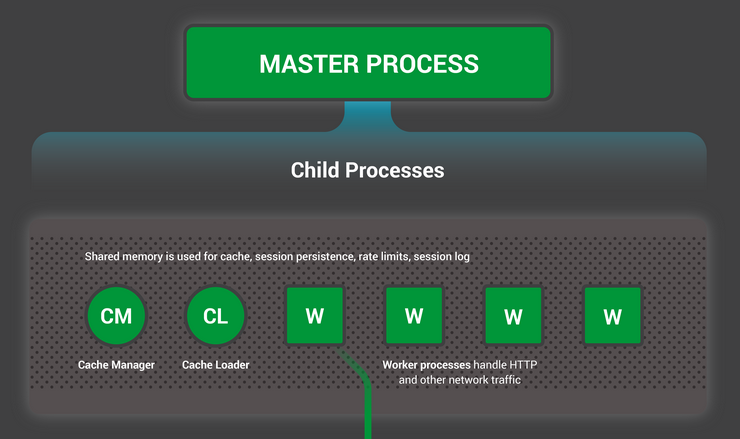nginx blog Inside NGINX: How We Designed for Performance & Scale
Setting the Scene – The NGINX Process Model

How Does NGINX Work?
Each worker process is single‑threaded and runs independently, grabbing new connections and processing them. The processes can communicate using shared memory for shared cache data, session persistence data, and other shared resources.
NOTE:
IPC shared memory
Inside the NGINX Worker Process
The NGINX worker processes begin by waiting for events on the listen sockets (accept_mutex and kernel socket sharding). Events are initiated by new incoming connections. These connections are assigned to a state machine – the HTTP state machine is the most commonly used, but NGINX also implements state machines for stream (raw TCP) traffic and for a number of mail protocols (SMTP, IMAP, and POP3).